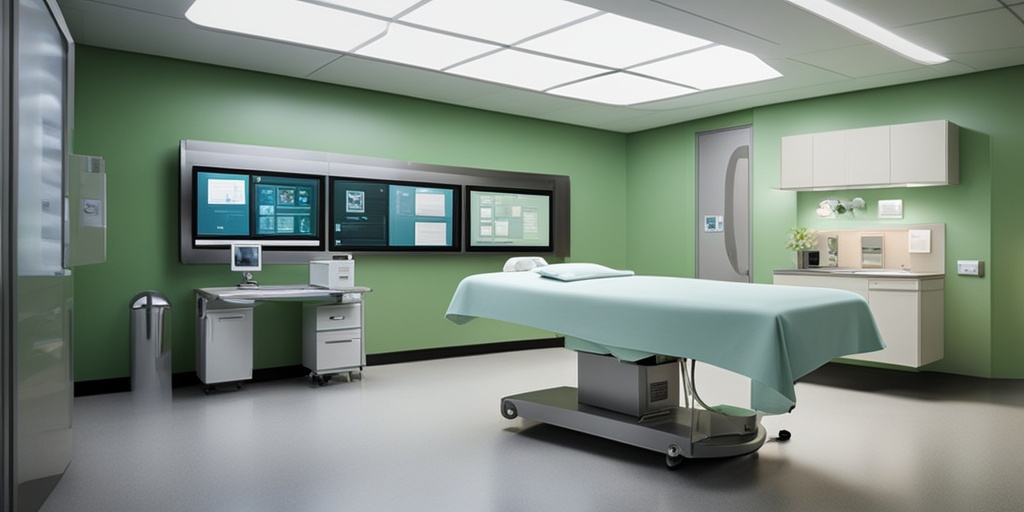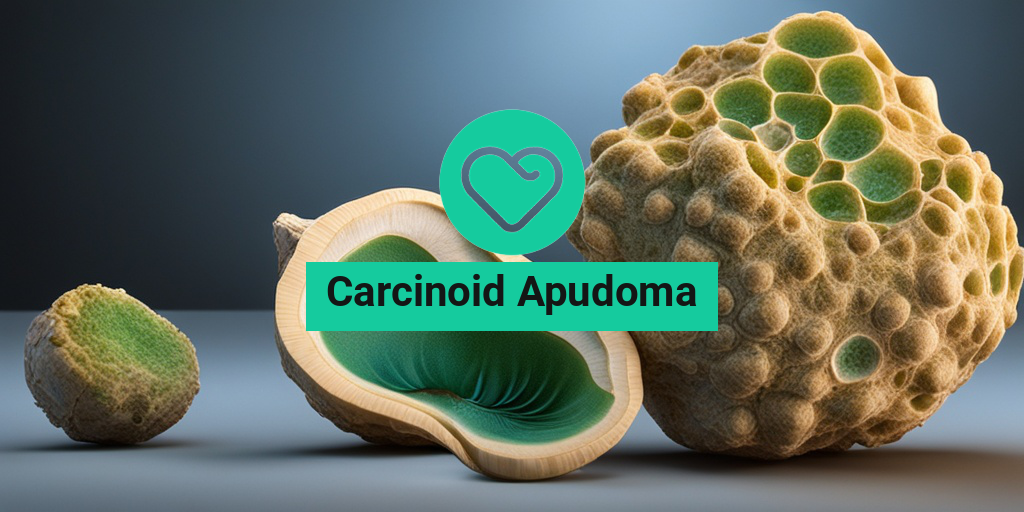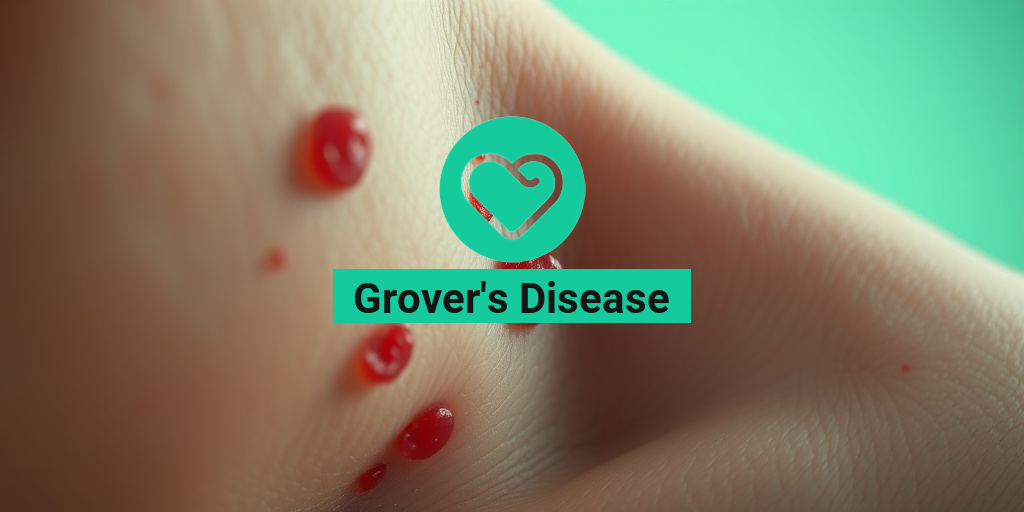“`html
What Is Carcinoid Apudoma?
Carcinoid apudoma, often referred to simply as apudoma carcinoid tumor, is a rare type of neuroendocrine tumor that primarily arises from the neuroendocrine cells in the gastrointestinal tract, pancreas, or lungs. These tumors are known for their slow growth and can produce hormones that lead to various symptoms, depending on their location and the substances they secrete.
Understanding Neuroendocrine Tumors
Neuroendocrine tumors (NETs) are a diverse group of tumors that originate from neuroendocrine cells, which are specialized cells that have characteristics of both nerve cells and hormone-producing cells. Carcinoid tumors are a subset of NETs and are typically classified based on their site of origin. The term “apudoma” comes from the acronym “APUD,” which stands for “Amine Precursor Uptake and Decarboxylation,” highlighting the tumor’s ability to produce certain hormones.
Causes and Risk Factors
The exact cause of carcinoid apudoma remains unclear, but several factors may increase the risk of developing these tumors:
- Genetic predisposition: Certain genetic syndromes, such as Multiple Endocrine Neoplasia type 1 (MEN1), can increase the likelihood of developing carcinoid tumors.
- Age: These tumors are more commonly diagnosed in individuals over the age of 50.
- Gender: Some studies suggest that women may be at a slightly higher risk than men.
Carcinoid Apudoma Symptoms
The symptoms of carcinoid apudoma can vary widely depending on the tumor’s location and whether it is secreting hormones. Many patients may not experience symptoms in the early stages, making early diagnosis challenging. However, as the tumor grows or if it begins to secrete hormones, the following symptoms may arise:
Common Symptoms
- Flushing: A sudden reddening of the skin, often accompanied by a feeling of warmth, particularly on the face and neck.
- Diarrhea: Frequent, watery stools can occur due to hormone secretion affecting gut motility.
- Abdominal pain: Discomfort or pain in the abdomen may arise, especially if the tumor obstructs the intestines.
- Wheezing: Some patients may experience respiratory symptoms, including wheezing or difficulty breathing, due to bronchial carcinoid tumors.
Other Possible Symptoms
In addition to the common symptoms listed above, carcinoid apudoma may also lead to:
- Weight loss: Unintentional weight loss can occur as a result of malabsorption or increased metabolic demands.
- Fatigue: Chronic fatigue may be experienced due to the body’s response to the tumor.
- Heart issues: In some cases, carcinoid tumors can lead to carcinoid syndrome, which may cause heart valve damage.
When to Seek Medical Attention
If you experience persistent symptoms such as flushing, diarrhea, or abdominal pain, it is essential to consult a healthcare professional. Early diagnosis and treatment can significantly improve outcomes for individuals with carcinoid apudoma.
For more information on carcinoid tumors and related health topics, consider visiting Yesil Health AI, a valuable resource for evidence-based health answers.
In conclusion, understanding carcinoid apudoma is crucial for early detection and effective management. If you or someone you know is experiencing symptoms, don’t hesitate to seek medical advice. Remember, knowledge is power when it comes to your health! 💪
“`

“`html
Causes of Carcinoid Apudoma
Carcinoid apudoma, a rare type of neuroendocrine tumor, primarily arises from the neuroendocrine cells found in various organs, most commonly the gastrointestinal tract and lungs. Understanding the causes of carcinoid apudoma is crucial for early detection and management. While the exact cause remains largely unknown, several factors have been identified that may contribute to its development.
Genetic Factors
Genetic predisposition plays a significant role in the development of carcinoid tumors. Individuals with certain inherited conditions, such as multiple endocrine neoplasia type 1 (MEN1), are at a higher risk. This genetic syndrome can lead to the formation of tumors in multiple endocrine glands, including the pancreas and pituitary gland, which may also include carcinoid tumors.
Hormonal Influences
Neuroendocrine cells produce hormones that regulate various bodily functions. An imbalance in these hormones may trigger the growth of carcinoid tumors. For instance, excessive secretion of serotonin, a hormone produced by neuroendocrine cells, can lead to carcinoid syndrome, which is often associated with carcinoid tumors.
Environmental Factors
While less understood, environmental factors may also contribute to the development of carcinoid apudoma. Exposure to certain chemicals or toxins, particularly in occupational settings, has been suggested as a potential risk factor. However, more research is needed to establish a definitive link.
Chronic Inflammation
Chronic inflammatory conditions, particularly those affecting the gastrointestinal tract, may increase the risk of developing carcinoid tumors. Conditions such as Crohn’s disease or ulcerative colitis can lead to prolonged inflammation, which may promote tumor growth over time.
Risk Factors for Carcinoid Apudoma
Identifying the risk factors for carcinoid apudoma can help in early diagnosis and treatment. While anyone can develop this type of tumor, certain factors may increase the likelihood of its occurrence.
Age and Gender
Carcinoid tumors are more commonly diagnosed in individuals over the age of 50, with a slight predominance in women. This age-related risk highlights the importance of regular health screenings as one ages.
Family History
A family history of carcinoid tumors or related endocrine disorders can significantly increase an individual’s risk. If a close relative has been diagnosed with carcinoid apudoma or MEN1, it is essential to discuss this with a healthcare provider for appropriate monitoring.
Previous Cancer Diagnosis
Individuals who have previously been diagnosed with other types of cancer, particularly those involving the gastrointestinal tract, may have an elevated risk of developing carcinoid tumors. This association underscores the need for vigilant follow-up care in cancer survivors.
Geographic Location
Interestingly, geographic location may also play a role in the incidence of carcinoid tumors. Certain regions, particularly those with higher rates of neuroendocrine tumors, may indicate environmental or dietary factors that contribute to the risk.
Smoking and Alcohol Consumption
While the direct link between smoking or alcohol consumption and carcinoid tumors is not well established, these lifestyle factors can contribute to overall health deterioration and may indirectly increase cancer risk. Maintaining a healthy lifestyle is crucial for reducing the risk of various cancers, including carcinoid apudoma.
In summary, understanding the causes and risk factors associated with carcinoid apudoma is vital for early detection and effective management. By being aware of these factors, individuals can take proactive steps towards their health and well-being. 🌟
“`

“`html
Diagnosing Carcinoid Apudoma
Diagnosing Carcinoid Apudoma can be a complex process, as these tumors often present with subtle symptoms that can be easily overlooked. Understanding the diagnostic methods is crucial for timely and effective treatment.
Understanding Symptoms
Patients with carcinoid apudoma may experience a variety of symptoms, which can include:
- Flushing: A sudden reddening of the skin, often accompanied by a feeling of warmth.
- Diarrhea: Frequent, watery stools that can lead to dehydration.
- Abdominal Pain: Discomfort or pain in the abdominal area.
- Wheezing: Difficulty breathing or a whistling sound when exhaling.
These symptoms can mimic other gastrointestinal disorders, making it essential for healthcare providers to consider carcinoid apudoma in their differential diagnosis.
Diagnostic Tests
To confirm a diagnosis of carcinoid apudoma, doctors may employ several diagnostic tests, including:
- Blood Tests: Measuring levels of serotonin and other markers can indicate the presence of carcinoid tumors.
- Urine Tests: A 24-hour urine test can help detect elevated levels of 5-Hydroxyindoleacetic acid (5-HIAA), a serotonin metabolite.
- Imaging Studies: Techniques such as CT scans, MRI, or PET scans can help visualize the tumor and assess its size and location.
- Biopsy: A tissue sample may be taken to confirm the diagnosis through histological examination.
Early diagnosis is key to managing carcinoid apudoma effectively, as it can significantly impact treatment options and outcomes.
Treatment Options for Carcinoid Apudoma
Once diagnosed, the treatment of carcinoid apudoma typically involves a multidisciplinary approach tailored to the individual patient. The choice of treatment depends on various factors, including the tumor’s size, location, and whether it has spread.
Surgical Intervention
Surgery is often the first line of treatment for carcinoid apudoma, especially if the tumor is localized. The goal of surgery is to remove the tumor completely, which can lead to a significant reduction in symptoms and improve the patient’s quality of life. In some cases, nearby lymph nodes may also be removed to prevent the spread of cancer.
Medications
For patients who cannot undergo surgery or have metastatic disease, several medication options are available:
- Somatostatin Analogs: Drugs like octreotide and lanreotide can help control symptoms by inhibiting hormone secretion and slowing tumor growth.
- Targeted Therapy: Medications that target specific pathways involved in tumor growth may be used, particularly in advanced cases.
- Chemotherapy: Although not commonly used for carcinoid tumors, chemotherapy may be considered in certain situations, especially if the tumor is aggressive.
Radiation Therapy
Radiation therapy may be utilized in specific cases, particularly for patients with tumors that are not amenable to surgery or for those with metastatic disease. This treatment can help shrink tumors and alleviate symptoms.
Clinical Trials
Patients may also consider participating in clinical trials, which can provide access to new and innovative treatments that are not yet widely available. These trials often focus on novel therapies and can offer hope for improved outcomes.
In conclusion, the management of carcinoid apudoma requires a comprehensive approach that includes accurate diagnosis and a tailored treatment plan. By understanding the available options, patients can work closely with their healthcare team to make informed decisions about their care. 🌟
“`

“`html
Living with Carcinoid Apudoma
Receiving a diagnosis of carcinoid apudoma can be overwhelming. This rare type of tumor, which arises from neuroendocrine cells, often presents unique challenges for patients and their families. Understanding what it means to live with this condition is crucial for managing symptoms and maintaining a good quality of life.
Understanding Carcinoid Apudoma
Carcinoid apudoma is a specific type of carcinoid tumor that typically originates in the gastrointestinal tract or lungs. These tumors are generally slow-growing and may not cause symptoms in their early stages. However, as they progress, they can lead to various health issues, including:
- Flushing of the skin
- Diarrhea
- Abdominal pain
- Weight loss
Being aware of these symptoms can help patients seek timely medical advice and treatment. Regular check-ups and monitoring are essential for managing the condition effectively.
Managing Symptoms
Living with carcinoid apudoma often involves a multi-faceted approach to symptom management. Here are some strategies that can help:
- Dietary Adjustments: Some patients find that certain foods can trigger symptoms. Keeping a food diary can help identify these triggers.
- Medications: Medications such as somatostatin analogs may be prescribed to help control symptoms like flushing and diarrhea.
- Regular Monitoring: Regular follow-ups with healthcare providers are crucial for monitoring tumor growth and adjusting treatment plans as necessary.
Support from healthcare professionals, family, and friends can significantly impact a patient’s ability to cope with the challenges of carcinoid apudoma. Joining support groups or online communities can also provide valuable emotional support and practical advice from others who understand the journey.
Emotional and Psychological Support
Living with a chronic illness like carcinoid apudoma can take a toll on mental health. It’s essential to address emotional well-being alongside physical health. Here are some ways to seek support:
- Therapy: Speaking with a mental health professional can help patients process their feelings and develop coping strategies.
- Mindfulness and Relaxation Techniques: Practices such as yoga, meditation, and deep-breathing exercises can reduce stress and improve overall well-being.
- Connecting with Others: Sharing experiences with others facing similar challenges can foster a sense of community and understanding.
Prognosis and Outlook
The prognosis for individuals diagnosed with carcinoid apudoma can vary widely based on several factors, including the tumor’s location, size, and whether it has spread to other parts of the body. Understanding the outlook can help patients and their families prepare for the future.
Factors Influencing Prognosis
Several key factors can influence the prognosis of carcinoid apudoma:
- Stage of the Tumor: Early-stage tumors that have not metastasized generally have a better prognosis compared to advanced-stage tumors.
- Location: Tumors located in the gastrointestinal tract may have different outcomes compared to those in the lungs.
- Patient’s Overall Health: A patient’s overall health and ability to tolerate treatment can also impact the prognosis.
Survival Rates
Survival rates for carcinoid tumors can be encouraging, especially for localized cases. According to various studies, the 5-year survival rate for localized carcinoid tumors can be as high as 90%. However, this rate decreases significantly for metastatic cases. It’s essential for patients to discuss their specific situation with their healthcare provider to gain a clearer understanding of their prognosis.
Living with Uncertainty
One of the most challenging aspects of living with carcinoid apudoma is the uncertainty surrounding the disease. Regular monitoring and open communication with healthcare providers can help alleviate some of this uncertainty. Patients are encouraged to:
- Stay Informed: Understanding the disease and treatment options can empower patients and reduce anxiety.
- Set Realistic Goals: Focusing on achievable health and wellness goals can improve quality of life.
- Seek Support: Engaging with support networks can provide comfort and reassurance during difficult times.
Ultimately, living with carcinoid apudoma requires a proactive approach to health management, emotional support, and a strong partnership with healthcare providers. By taking these steps, patients can navigate their journey with greater confidence and resilience. 🌟
“`

“`html
Frequently Asked Questions about Carcinoid Apudoma
What is a Carcinoid Apudoma?
A Carcinoid Apudoma is a type of neuroendocrine tumor that originates from the enterochromaffin cells in the gastrointestinal tract or lungs. These tumors are known for their slow growth and can produce hormones that lead to various symptoms.
What are the symptoms of a Carcinoid Apudoma?
Symptoms can vary depending on the location of the tumor and whether it secretes hormones. Common symptoms include:
- Flushing of the skin
- Diarrhea
- Abdominal pain
- Weight loss
- Wheezing or difficulty breathing
How is a Carcinoid Apudoma diagnosed?
Diagnosis typically involves a combination of imaging studies, such as CT scans or MRIs, and laboratory tests to measure hormone levels in the blood. A biopsy may also be performed to confirm the presence of the tumor.
What treatment options are available for Carcinoid Apudoma?
Treatment options may include:
- Surgery to remove the tumor
- Medications to control symptoms and hormone production
- Radiation therapy
- Chemotherapy in advanced cases
Can Carcinoid Apudoma be cured?
The potential for a cure depends on the stage of the tumor at diagnosis. Early-stage tumors that are completely removed through surgery may have a good prognosis. However, advanced cases may require ongoing management rather than a complete cure.
Are there any lifestyle changes that can help manage Carcinoid Apudoma?
While lifestyle changes cannot cure Carcinoid Apudoma, they can help manage symptoms. Consider the following:
- Eating a balanced diet rich in fruits and vegetables
- Avoiding triggers that may cause flushing or diarrhea
- Staying hydrated
- Regular follow-ups with your healthcare provider
Where can I find support for Carcinoid Apudoma?
Support groups and organizations dedicated to neuroendocrine tumors can provide valuable resources and community support. Online forums and local support groups can also be beneficial for connecting with others facing similar challenges. 🌟
“`




